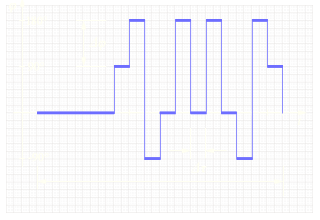Frank Code
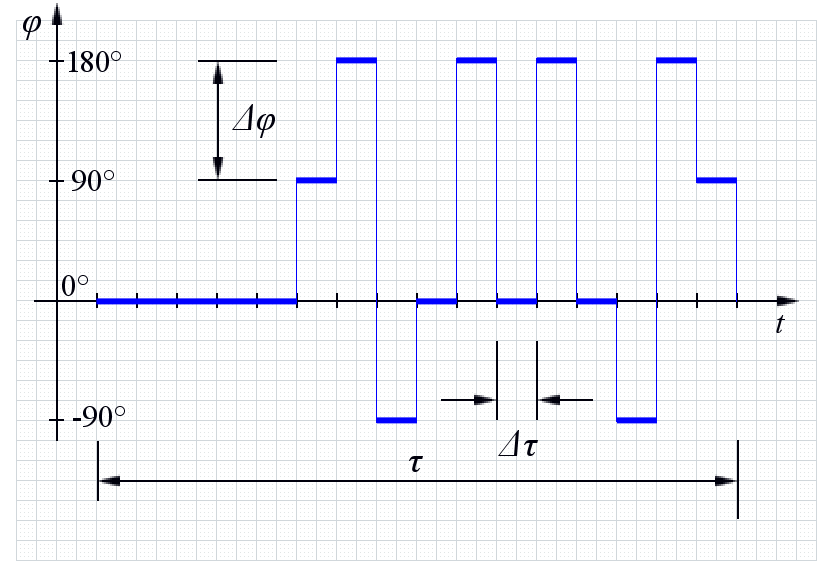
Figure 1: Example given of N-phase Frank code for pulse compression
Frank Code
The Frank Code is a polyphase code modulation format used for pulse compression. It use harmonically related phases which are based on certain fundamental phase increments. This form of phase coding was developed by Robert L. Frank. The Frank Code has N2 elements and is defined as:
| Φi,j = (2π/N)(i-1)(j-1) | (1) |
Where i and j range from 1 to N. Single pulse of width τ is divided into N groups which are equal. Each of these N groups are further divided into N sub-pulses. Each of these sub-pulses have width of Δτ. Total number of sub-pulses assigned per pulse is equal to N2. Here phase within each of the sub-pulse is kept constant with reference to CW signal. A Frank code with N2 sub-pulses is known as N-phase Frank code. The first step in computing a Frank code is to divide 360 degree by N. For N-phase Frank code, phase shift of each of the sub-pulses are taken from following matrix as mentioned in equation:

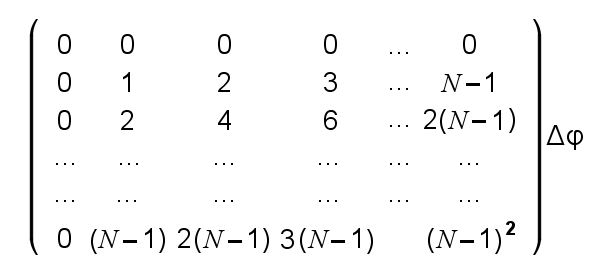
 (2)
(2)
Each row represents the phases of the sub-pulses of a group. The fundamental phase increment is (Δφ) = 360 degree/N. This phase increment is then multiplied by all the numbers in the matrix. Remember: phase shifts that are larger than 360 degrees may be reduced without influence on the waveform by subtracting 360 degrees.
For example, the Frank Code with N = 4, by taking phase value modulo is given by the following sequence (The fundamental increment is Δφ = 360°/4 = 90° here):
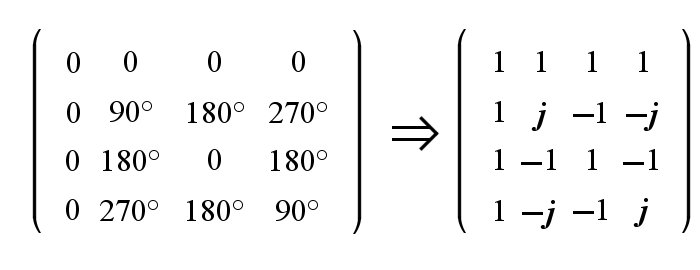
 (3)
(3)
Hence frank code having 16 elements are given by following sequence:
| F16 = { 1 1 1 1 1 j -1 -j 1 -1 1 -1 1 -j -1 j } | (4) |

